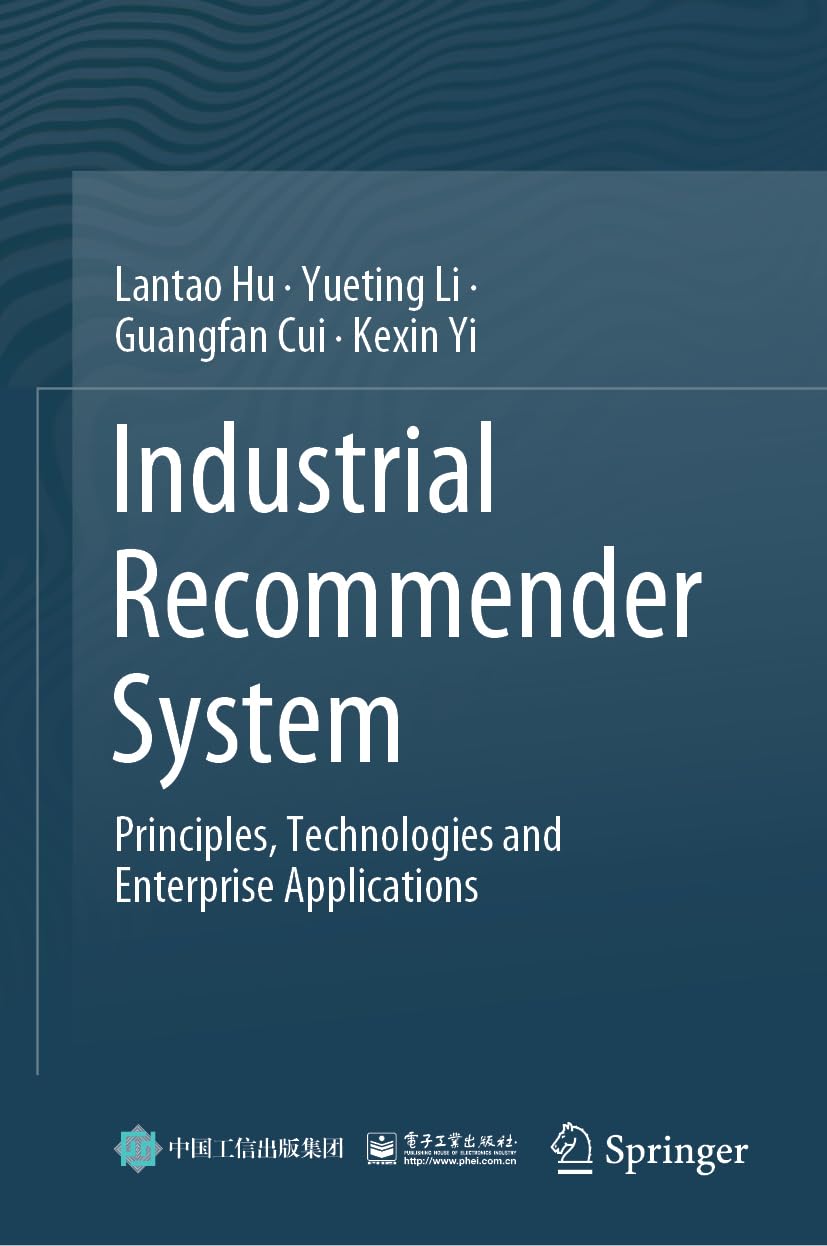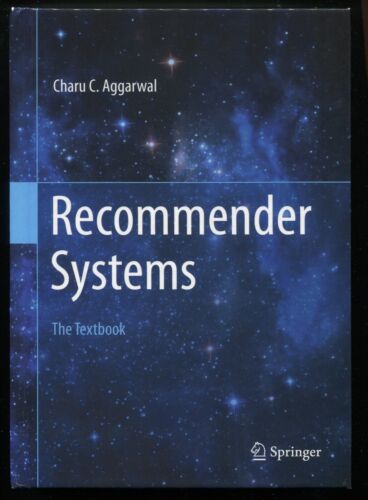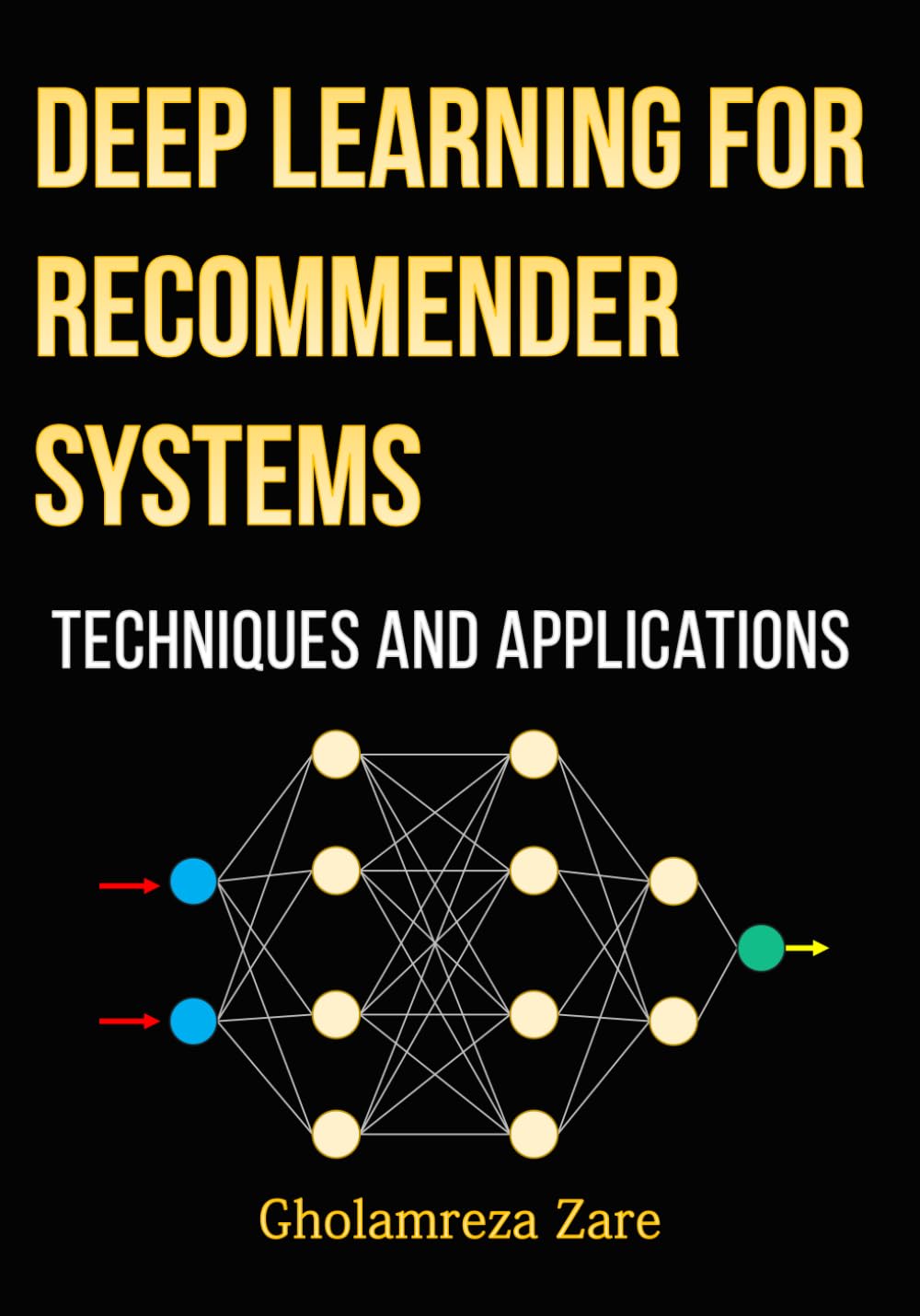Your cart is currently empty!
Tag: Recommender

How to Build Your Own Recommender System Using Machine Learning
Recommender systems are becoming increasingly popular in today’s digital age, as they help users discover new products, services, and content based on their preferences and behaviors. These systems are widely used in e-commerce, social media platforms, and streaming services to provide personalized recommendations to users.Building your own recommender system using machine learning can be a fun and rewarding project for those interested in data science and artificial intelligence. In this article, we will discuss the steps involved in building a basic recommender system using machine learning algorithms.
1. Define your goals and data sources:
Before you start building your recommender system, it’s important to define your goals and objectives. What kind of recommendations do you want to provide to users? Are you building a movie recommendation system, a product recommendation system, or a content recommendation system?
Next, you need to gather and prepare the data sources that will be used to train your recommender system. This data can include user ratings, purchase history, browsing behavior, and other relevant information that can help personalize recommendations for users.
2. Choose a machine learning algorithm:
There are several machine learning algorithms that can be used to build a recommender system, including collaborative filtering, content-based filtering, and hybrid approaches. Collaborative filtering is one of the most popular algorithms used in recommender systems, as it leverages the behavior of users to make predictions about their preferences.
Content-based filtering, on the other hand, uses the attributes of the items being recommended to users to make predictions. Hybrid approaches combine collaborative filtering and content-based filtering to provide more accurate and diverse recommendations to users.
3. Preprocess and clean the data:
Once you have chosen a machine learning algorithm, you need to preprocess and clean the data before training your recommender system. This can involve removing duplicate entries, handling missing values, and normalizing the data to ensure that the algorithm can make accurate predictions.
4. Train the model:
After preprocessing the data, you can train your recommender system using machine learning algorithms. This involves splitting the data into training and testing sets, fitting the algorithm to the training data, and evaluating its performance using metrics such as precision, recall, and accuracy.
5. Make recommendations:
Once your recommender system is trained and evaluated, you can start making recommendations to users based on their preferences and behaviors. This can involve generating top-N recommendations for each user, recommending similar items based on user preferences, or providing personalized recommendations based on user profiles.
Building your own recommender system using machine learning can be a challenging but rewarding project for data science enthusiasts. By following the steps outlined in this article, you can create a basic recommender system that provides personalized recommendations to users based on their preferences and behaviors.
#Build #Recommender #System #Machine #Learning,read machine learning: make your own recommender system online
RNN-Based Recommender Systems: A Closer Look
Recommender systems have become an integral part of our daily lives, helping us discover new movies, music, products, and services tailored to our preferences. Traditional recommendation algorithms, such as collaborative filtering and content-based filtering, have been widely used in the past. Recently, deep learning techniques, such as recurrent neural networks (RNNs), have shown promising results in improving the performance of recommender systems.RNNs are a type of neural network that is well-suited for processing sequential data, making them an ideal choice for recommendation tasks that involve sequences of user interactions over time. RNN-based recommender systems leverage the temporal dynamics of user behavior to make more accurate and personalized recommendations.
One of the key advantages of RNN-based recommender systems is their ability to capture long-term dependencies in user behavior. By modeling the sequential interactions of users with items, RNNs can learn patterns and trends in user preferences that traditional algorithms may overlook. This allows RNN-based recommender systems to make more accurate predictions and provide more relevant recommendations to users.
Another advantage of RNN-based recommender systems is their flexibility in handling different types of input data. RNNs can effectively process various types of information, such as user profiles, item features, and contextual data, allowing them to incorporate a wide range of signals into the recommendation process. This enables RNN-based recommender systems to make more informed decisions and deliver more personalized recommendations to users.
Despite their advantages, RNN-based recommender systems also face challenges, such as the need for large amounts of training data and the potential for overfitting. Additionally, RNNs can be computationally expensive to train and require careful tuning of hyperparameters to achieve optimal performance.
In conclusion, RNN-based recommender systems offer a powerful and flexible approach to recommendation tasks by leveraging the temporal dynamics of user behavior. By capturing long-term dependencies and incorporating a wide range of input data, RNNs can deliver more accurate and personalized recommendations to users. While there are challenges to overcome, the potential for RNN-based recommender systems to improve recommendation quality and user satisfaction makes them an exciting area of research and development in the field of recommender systems.
#RNNBased #Recommender #Systems #Closer,rnn
Panorama of Deep Learning Based Recommender System: Development & Challenges by

Panorama of Deep Learning Based Recommender System: Development & Challenges by
Price : 85.84
Ends on : N/A
View on eBay
Panorama of Deep Learning Based Recommender System: Development & ChallengesDeep learning has revolutionized the way recommender systems work, enabling them to provide more accurate and personalized recommendations to users. In this post, we will explore the development of deep learning-based recommender systems and the challenges they face.
Development of Deep Learning Based Recommender Systems:
Deep learning-based recommender systems have gained popularity due to their ability to extract complex patterns from large amounts of data, leading to more accurate recommendations. These systems use neural networks to learn from user preferences and item characteristics, allowing them to make personalized recommendations.
One of the key advantages of deep learning-based recommender systems is their ability to handle different types of data, such as structured and unstructured data. This enables them to incorporate various features, such as user demographics, item attributes, and user-item interactions, to improve recommendation accuracy.
Challenges of Deep Learning Based Recommender Systems:
Despite their many advantages, deep learning-based recommender systems face several challenges. One of the main challenges is the need for large amounts of data to train the models effectively. Deep learning models require a substantial amount of data to learn complex patterns, which can be a limiting factor for smaller companies with less data.
Another challenge is the interpretability of deep learning models. Deep learning models are often seen as black boxes, making it difficult to understand how they arrive at their recommendations. This lack of transparency can be a concern for users who want to know why a particular recommendation was made.
Additionally, deep learning-based recommender systems may suffer from issues such as overfitting, cold start problems, and scalability issues. Overfitting occurs when a model learns the noise in the training data, leading to poor generalization on new data. Cold start problems occur when the system cannot make recommendations for new users or items with little to no interaction data. Scalability can be a challenge for deep learning models as they require significant computational resources to train and deploy.
In conclusion, deep learning-based recommender systems have made significant advancements in providing personalized recommendations to users. However, they are not without challenges, including the need for large amounts of data, interpretability issues, and scalability concerns. Addressing these challenges will be crucial for the continued development and adoption of deep learning-based recommender systems.
#Panorama #Deep #Learning #Based #Recommender #System #Development #Challenges, deep learning
Industrial Recommender System: Principles, Technologies and Enterprise Applications
Price: $79.99
(as of Dec 24,2024 06:59:53 UTC – Details)
Publisher : Springer; 2024th edition (June 1, 2024)
Language : English
Hardcover : 261 pages
ISBN-10 : 9819725801
ISBN-13 : 978-9819725809
Item Weight : 1.3 pounds
Dimensions : 6 x 0.7 x 8.9 inches
In today’s fast-paced industrial landscape, businesses are constantly seeking innovative ways to improve efficiency, productivity, and decision-making processes. One such solution that has gained traction in recent years is the industrial recommender system.Industrial recommender systems leverage algorithms and machine learning techniques to analyze vast amounts of data and provide personalized recommendations to users based on their preferences and behavior. These systems can be used in various industries, including manufacturing, logistics, and supply chain management, to optimize operations and drive business growth.
In this post, we will explore the principles behind industrial recommender systems, the technologies that power them, and their applications in enterprise settings.
Principles of Industrial Recommender Systems:
Industrial recommender systems are built on the principles of collaborative filtering, content-based filtering, and hybrid approaches. Collaborative filtering involves making recommendations based on the preferences and behavior of similar users, while content-based filtering recommends items based on their attributes and features. Hybrid approaches combine these two methods to provide more accurate and diverse recommendations.
Technologies Powering Industrial Recommender Systems:
Industrial recommender systems rely on advanced technologies such as machine learning, natural language processing, and big data analytics. Machine learning algorithms, such as matrix factorization and deep learning, are used to analyze data and generate recommendations. Natural language processing techniques are employed to understand user preferences and feedback, while big data analytics helps process large volumes of data quickly and effectively.
Enterprise Applications of Industrial Recommender Systems:
Industrial recommender systems can be used in various enterprise applications, including product recommendation, inventory management, and predictive maintenance. In manufacturing, these systems can help optimize production schedules and minimize downtime by recommending the most efficient workflows. In logistics and supply chain management, recommender systems can assist in route optimization and inventory forecasting.
Overall, industrial recommender systems offer a powerful tool for businesses looking to streamline operations, improve decision-making, and drive growth. By leveraging the principles, technologies, and applications of these systems, enterprises can stay ahead of the competition and adapt to the ever-changing demands of the industrial landscape.
#Industrial #Recommender #System #Principles #Technologies #Enterprise #Applications
Recommender Systems The Textbook by Charu C. Aggarwal

Recommender Systems The Textbook by Charu C. Aggarwal
Price : 34.98
Ends on : N/A
View on eBay
Recommender Systems: The Textbook by Charu C. AggarwalAre you interested in learning about recommender systems and their applications in today’s digital world? Look no further than “Recommender Systems: The Textbook” by Charu C. Aggarwal.
This comprehensive textbook covers the fundamental concepts, algorithms, and techniques used in building recommender systems. From collaborative filtering to content-based filtering, from matrix factorization to deep learning models, this book provides a thorough overview of the field.
Charu C. Aggarwal, a renowned expert in data mining and recommender systems, offers insights and practical advice based on his years of research and experience. Whether you are a student, researcher, or industry professional, this textbook is a valuable resource for understanding and implementing recommender systems.
So, if you want to dive deep into the world of recommender systems, be sure to check out “Recommender Systems: The Textbook” by Charu C. Aggarwal.
#Recommender #Systems #Textbook #Charu #Aggarwal
Machine Learning: Make Your Own Recommender System (Machine Learning with Python for Beginners Book Series 3)
Price: $4.99
(as of Dec 18,2024 05:39:29 UTC – Details)From the Publisher
Add Machine Learning to Your Skill Stack in 2023


Plain English Explanations
All technical concepts are explained in plain English to keep you learning all the way to the final chapter!


Video Content Included
Enjoy access to video classes and code demonstrations to reinforce fundamental concepts.


Chapter Quizzes
Test your knowledge and technical understanding with practical chapter quizzes along the way.


Code Exercises
Learn how to code your own basic prediction models using Python and datasets available online.
Add to Cart
Customer Reviews
4.4 out of 5 stars
385
4.5 out of 5 stars
215
4.1 out of 5 stars
112
4.4 out of 5 stars
507
4.5 out of 5 stars
48
4.4 out of 5 stars
238
Price
$15.80$15.80
$3.99$3.99
$3.99$3.99
$3.94$3.94
$3.99$3.99
$3.92$3.92Python Code Examples
✓
✓
✓
✓
✓Pre-requisites
None (basic Python & statistics useful)
Basic Python
Basic Python
None
NoneVideo Content
✓✓
ASIN : B07DWS346Y
Publisher : Scatterplot Press (June 20, 2018)
Publication date : June 20, 2018
Language : English
File size : 9781 KB
Text-to-Speech : Enabled
Screen Reader : Supported
Enhanced typesetting : Enabled
X-Ray : Not Enabled
Word Wise : Not Enabled
Print length : 127 pages
Page numbers source ISBN : 1726769038
Are you interested in learning how to build your own recommender system using machine learning techniques? Look no further! In our latest book in the Machine Learning with Python for Beginners series, we will guide you through the process of creating your very own recommender system.Whether you are a beginner in the field of machine learning or have some experience already, this book is perfect for anyone looking to expand their knowledge and skills. You will learn how to collect and preprocess data, build a recommendation model, and evaluate its performance.
By the end of this book, you will have a solid understanding of how recommender systems work and the ability to create your own personalized recommendation engine. Don’t miss out on this opportunity to enhance your machine learning skills and create something amazing! Grab your copy of Machine Learning: Make Your Own Recommender System today.
#Machine #Learning #Recommender #System #Machine #Learning #Python #Beginners #Book #Series
Deep Learning for Recommender Systems: Techniques and Applications
Price: $19.99
(as of Dec 17,2024 08:00:38 UTC – Details)
Deep Learning for Recommender Systems: Techniques and ApplicationsRecommendation systems are becoming increasingly important in today’s digital world, as they help users discover new products, services, and content that are tailored to their preferences. Deep learning techniques have revolutionized the field of recommender systems, enabling more accurate and personalized recommendations.
In this post, we will explore the various deep learning techniques that are commonly used in recommender systems, as well as some of the applications of these techniques in real-world scenarios.
One of the most popular deep learning techniques used in recommender systems is collaborative filtering, which involves analyzing the behavior of multiple users to make recommendations. This can be done using techniques such as matrix factorization, deep neural networks, and recurrent neural networks.
Another technique that is commonly used in recommender systems is content-based filtering, which involves analyzing the characteristics of the items being recommended and matching them to the user’s preferences. Deep learning models such as convolutional neural networks and natural language processing techniques are often used in content-based filtering.
In addition to these techniques, hybrid models that combine collaborative filtering and content-based filtering are also commonly used in recommender systems. These models leverage the strengths of both approaches to provide more accurate and diverse recommendations to users.
In terms of applications, deep learning recommender systems are used in a wide range of industries, including e-commerce, media and entertainment, and social networking. For example, companies like Amazon and Netflix use deep learning techniques to recommend products and movies to their users based on their browsing and viewing history.
Overall, deep learning has significantly improved the performance and accuracy of recommender systems, enabling more personalized and relevant recommendations for users. As the field continues to evolve, we can expect to see even more innovative applications of deep learning in recommender systems in the future.
#Deep #Learning #Recommender #Systems #Techniques #Applications
